
Print Files: A4 Size (pdf), Text (txt).

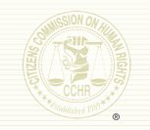
The Citizens Commission on Human Rights (CCHR) was established in 1969 by the Church of Scientology to investigate and expose psychiatric violations of human rights, and to clean up the field of mental healing. Its co-founder is Dr. Thomas Szasz, professor of psychiatry emeritus and an internationally renowned author. Today, CCHR has more than 130 chapters in over 30 countries. Its board of advisors, called Commissioners, includes doctors, lawyers, educators, artists, business professionals, and civil and human rights representatives.
CCHR has inspired and caused many hundreds of reforms by testifying before legislative hearings and conducting public hearings into psychiatric abuse, as well as working with media, law enforcement and public officials the world over.

Newspaper articles often trumpet the "wonders" of modern day psycho-pharmaceutical research for the treatment of childhood learning and emotional "problems" and "disabilities."
They sound reasonable. They sound convincing ... science again conquers our material universe for the benefit of mankind. Who could possibly argue with making a normal life possible for those in trouble?
Daniel's parents would. And so would Cory's. They would argue vehemently and passionately. And with an estimated 17 million schoolchildren worldwide said to have a mental disorder that requires them to be chemically restrained by powerful mind-altering psychiatric drugs, they are far from alone.
Who are Daniel and Cory and why do their parents disagree? They are children who are not only unable to lead normal lives because of so-called "miracle" drugs; they are tragically no longer with us at all, because of those "medications."
Analyze the above more closely.
Reflect on several of the words and how they are used. Take "normal," for example. You probably have your own idea of what a normal sort of life is. Does it involve the consumption of addictive, mind-altering and potentially dangerous psychiatric drugs?
What about the word "medications?" Does it ease your mind by conjuring up images of some benign cough syrup prescribed by a kindly family doctor? Nothing could be further from the truth. A psychiatric medication is a very powerful addictive drug.
The term "scientific" is often used by psychiatry to add legitimacy to its pronouncements. According to the World Book Dictionary, the word implies "systematic; accurate; exact." Those characteristics have nothing to do with psychiatry or, for that matter, its cousin, psychology.
The trouble is that their worldwide propaganda on the subject of children and education has thoroughly duped well-meaning parents, teachers and politicians alike, that normal childhood behavior is no longer normal and that it is a mental illness. And further, that only by continuous, heavy drugging from a very early age, can the "afflicted" child possibly make it through life's worst.
Contrary to psychiatric opinion, children are not "experimental animals," they are human beings who have every right to expect protection, care and the chance to reach their full potential. They will only be denied this if trapped within the verbal and chemical straitjackets that are psychiatry's labels and drugs.
This publication provides a perspective and information not made readily available to parents and others. Children are our future. There is nothing less at stake here than our very future itself.

Walk into an average school today and you could be forgiven for thinking that you had walked into a mental health clinic, as kids line up for their daily stimulant drug dosage. Look closer and you will find a black market drug trade run by some schoolchildren, dealing in the very same drugs being prescribed for supposed learning difficulties.
After edging upwards for more than a century, U.S. national Student Aptitude Test (SAT) scores have plummeted since 1963, when psychological programs and psychiatric drugs entered the classroom. In South Africa, since the introduction of psychological curricula, school examination results for 1997 showed a national pass rate of only 47%, which was down from 1994's rate of 58%.
To appreciate the current influence of psychiatric and psychological thinking and practice on the schools and families of the world, it is essential to understand how their doctrines have achieved such an iron grip on the field of education. The story begins more than a century ago.
In 1879, German psychologist Wilhelm Wundt founded "experimental psychology." He declared man to be an animal, with no soul, that thought was merely the result of brain activity and that "consciousness is of no avail until these are derived from chemical and physical processes." [Emphasis added]
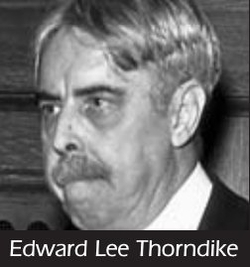
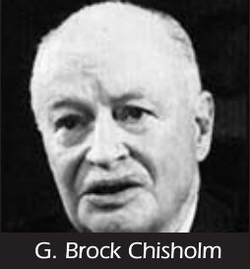
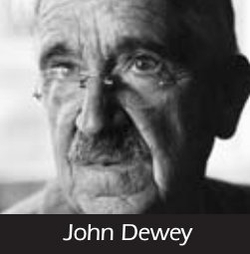
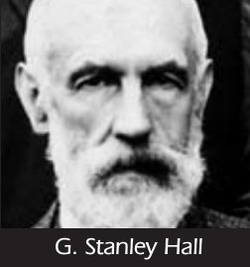
Key players subsequently implemented Wundt's theories into education. Some included:
EDWARD LEE THORNDIKE, animal psychologist, after experimenting on monkeys, rats, cats, mice, chickens and other animals, then applied his techniques to children. He stated, "It will, of course, be understood that directly or indirectly, soon or late, every advance in the sciences of human nature will contribute to our success in controlling human nature ..."
PAUL SCHRODER, professor of psychiatry, addressed the first conference of the German Society for Child Psychiatry and Therapeutic Education in 1940, attended by the elite of Nazi psychiatry and proclaimed: "Child psychiatry has to ... help to integrate (hereditarily) damaged or inadequate children for their own and the public's good ... under constant expert selection of the valuable and educable ones with just as strict and resolute sacrifice of those deemed predominantly worthless and uneducable."
J. R. REES, co-founder of the World Federation for Mental Health (WFMH), spoke of psychiatry permeating every education activity and boasted that it had made a "useful attack" upon the "teaching profession" for the purpose of promoting "our particular point of view."1
G. BROCK CHISHOLM, co-founder of the WFMH, said, "If the race is to be freed from its crippling burden of good and evil, it must be psychiatrists who take the original responsibility."
JOHN DEWEY, psychologist and promoter of the "man is an animal" theory, labeled the urge to teach children to read early in life a "perversion," and advocated that schools should take on the role of social, rather than academic, institutions.
G. STANLEY HALL, first president of the American Psychological Association, explained education for the masses was not necessary. "We must overcome the fetishism of the alphabet, of the multiplication tables, of grammar," he said. "It would be no serious loss if a child never learned to read."
JAMES CATTELL, a later American Psychological Association president, theorized that "little is gained by teaching a child sounds and letters as the first step to being able to read." His "whole word" reading method proved to be disastrous, crashing literacy rates everywhere it was used.
MANFRED MÜLLER-KÜPPERS, of the German Society for Child and Adolescent Psychiatry, asserted in the 1970s that there should be "no provisions for school attendance without child psychiatric examinations."
The influence is still prevalent. In 2003, psychiatrists and psychologists advised a U.S. New Freedom Commission on Mental Health to recommend, "[T]he early detection of mental health problems in [school] children ... through routine and comprehensive testing and screening."
Author and educator Beverly Eakman states, "Most people today suspect that education is not really about literacy, `basics,' or proficiency at anything. What is less well understood is that there exists in this country, and indeed throughout the industrialized world, what can best be described as an `Illiteracy Cartel' - ostensibly aimed at furthering `mental health.' This cartel derives its power from those who stand to benefit financially and politically from ignorance and educational malpractice; from the frustration, the crime, the joblessness and social chaos that mis-education produces."2
Preaching their false and disturbing creed, psychiatrists and psychologists have successfully insinuated themselves into positions of authority in schools and completed an almost total overthrow of education. As a result, our once strong and effective scholastic-based systems have been seriously compromised, and with them, the impressive results of better years.
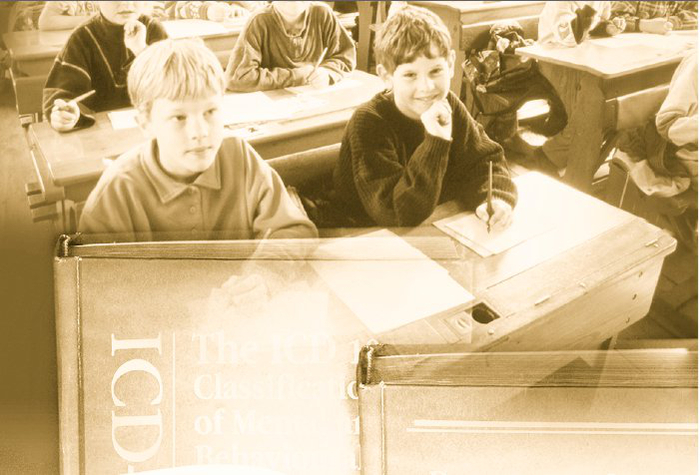
Successfully masquerading as a science requires that certain appearances be maintained. It was German psychiatrist Emil Kraepelin, a Wundt student, who first devised a system of codification of human behavior, while simultaneously acknowledging that psychiatry had no effective treatments or cures for most psychiatric disorders. [Emphasis added.]3
Over a century later, things haven't changed. In 1995, Dr. Rex Cowdry, then-director of the U.S. National Institute of Mental Health (NIMH) admitted, "We do not know the causes [of any mental illness]. We don't have methods of `curing' these illnesses yet." [Emphasis added.]4
Since Kraepelin, the number of psychiatric condemnations of human behavior has steadily expanded. Today, they are codified in the American Psychiatric Association's (APA) Diagnostic and Statistical Manual of Mental Disorders (DSM).
In 1987, "attention deficit hyperactivity disorder" (ADHD) was literally voted into existence by a show of hands of APA committee members and enshrined in DSM-III-R. Within one year, 500,000 children in the U.S. alone were labeled with this. Today, the number has risen alarmingly to 6 million.
Internationally, the number of children diagnosed with ADHD has been skyrocketing since the 1990s. Between 1989 and 1996, France experienced a 600% increase in the number of children labeled "hyperactive."
So-called symptoms of ADHD include: fails to give close attention to details or may make careless mistakes in schoolwork; work is often messy or careless; has difficulty sustaining attention in tasks or play activities; fails to complete schoolwork, chores or other duties; often fidgets with hands or feet or squirms in seat; often runs about, climbs or talks excessively - symptoms that effectively capture all children.
In 2002, Assistant Professor Eva Karfve, a Swedish sociologist and author, disputed any validity to this disorder. "The claim that ADHD is biologically caused or stems from a metabolic disturbance in the brain is not scientifically founded in any way."
Often the child is simply bored. Fred Shaw Jr., a former Los Angeles deputy sheriff who now runs several California homes for boys (alternatives to prison), tells this story about a boy labeled as ADHD by a psychologist: "I asked the young man: `What's the longest you've ever talked with a girl on the phone?' Three to five hours. `How long can you play a video game?' Eight hours straight. `What about reading books?' From the beginning to end - the ones he liked. So it appeared to me that he could pay attention to anything that he was interested in."
Having infiltrated and secured positions of authority within the education system, and set the scene for a patterned onslaught of psychiatric diagnosis, psychiatry unleashed its next, most dangerous and most lucrative weapons on our youth-addictive, psychotropic drugs posing as medication.
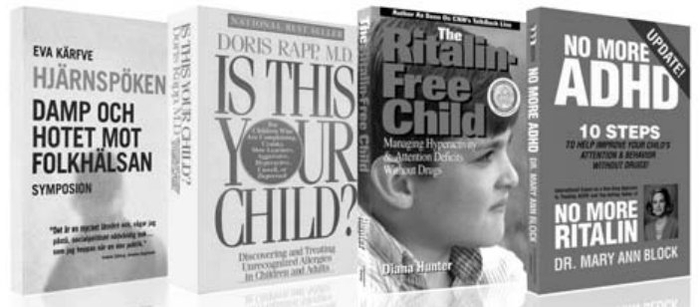
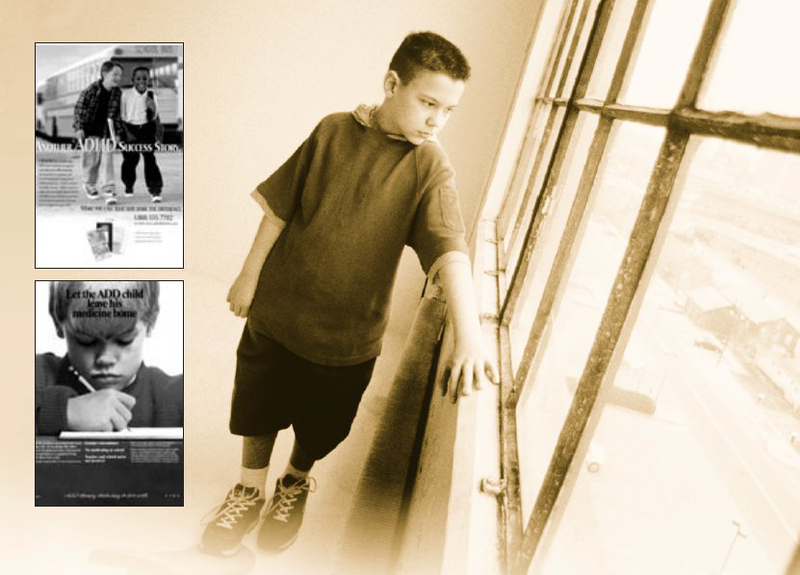
When James was first diagnosed with Attention Deficit Disorder, his mother refused to put him on psychiatric drugs. The school urged a psychological evaluation be done. Matters soon deteriorated. "At school, my boy was labeled, drugged and almost died," his mother said. Three days after being put on the drug she received an urgent call from the school that her son was having severe chest pains and had to be rushed to the hospital. The doctors told her it was a reaction to the drug. When she stopped giving her son pills, the danger passed.
James was lucky. Millions of children around the world just like him are not.
Pediatrician Fred Baughman Jr., reports: "The following children are no longer hyperactive or inattentive - they are dead. Between 1994 and 2001, I was consulted, medically or legally, formally or informally, in the following death cases: Stephanie, 11, prescribed a stimulant and died of cardiac arrhythmia; Matthew, 14, prescribed a stimulant and died of cardiomyopathy [disease of heart muscle]; Macauley, 7, prescribed a stimulant and three other psychiatric drugs, suffered a cardiac arrest; Travis, 13, prescribed a stimulant and suffered cardiomyopathy; Randy, 9, given a stimulant and several other drugs and died from cardiac arrest; Cameron, 12, prescribed a stimulant and died from hyper-eosinophilic syndrome [abnormal increase in white blood cells]. This is a high price to pay for the `treatment' of a `disease' that does not exist."
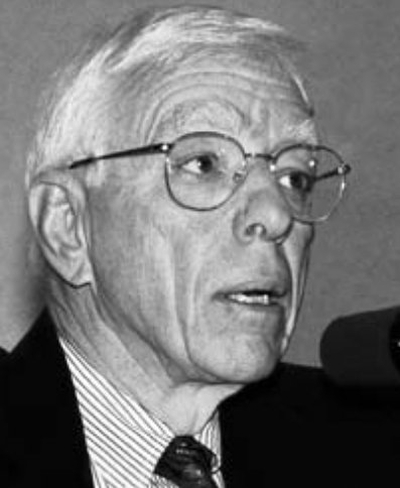
Psychiatry's most recent theory is that all mental problems stem from a "chemical imbalance" in the brain. Psychiatrist David Kaisler is unequivocal about this lie: "[M]odern psychiatry has yet to convincingly prove the genetic/biologic cause of any single mental illness. ... Patients [have] been diagnosed with `chemical imbalances' despite the fact that no test exists to support such a claim, and ... there is no real conception of what a correct chemical balance would look like."5
In 2001, Ty C. Colbert, Ph.D., wrote, "As with all other mental disorders, there is no biological test or biological marker for ADHD." He cites the U.S. National Institutes of Health Consensus Conference on ADHD that concluded, "Researchers have vigorously attempted to find proof that ADHD is caused by a chemical imbalance, but have come up with nothing."
When this idea of a "chemical imbalance" is successfully used to secure the cooperation of unwitting parents, it establishes a dangerous precedent. "These children believe they have something wrong with their brains that makes it impossible for them to control themselves without using a pill," says Dr. Baughman.
By "pill" of course is meant hazardous and addictive amphetamine-like stimulants or antidepressants like Selective Serotonin Reuptake Inhibitors (SSRIs). With these, psychiatrists are creating a generation of drug addicts. The manufacturer of methylphenidate (Ritalin) admits it is a drug of dependency.6 And addictive drugs spawn a culture of drug dealing and abuse. Ritalin and other stimulants are now sold illicitly in schools in numerous countries for $2 to $10 a pill. More potent than cocaine, children crush the tablets and snort them.
Thomas Moore, author of Prescriptions for Disaster said that the current use of drugs like Ritalin is taking "appalling risks" with a generation of kids. The drug is given, for "short-term control of behavior-not to reduce any identifiable hazard to [children's] health. Such large-scale chemical control of human behavior has not been previously undertaken in our society outside of nursing homes and mental institutions."
Today, students are often screened or "profiled" by using questionnaires that inquire about their own and their parents' attitudes and behaviors. One U.S. "teen screen" program surveys students with questions such as, "Has there been a time when nothing was fun for you and you just weren't interested in anything?"7 The child can be referred to a psychologist or psychiatrist and, usually, prescribed drugs. Joseph Glenmullen of Harvard Medical School said the questionnaires of symptoms used to "diagnose" depression "may look scientific," but "are utterly subjective measures."8

The drugs prescribed for "depression" are known to cause violent and suicidal behavior. In 2003, the British medicine regulatory agency warned doctors not to prescribe SSRI antidepressants for under-18 year olds because of the risk of suicide. In 2004, the U.S. Food and Drug Administration (FDA) ordered a "black box" warning about suicide dangers to be prominently placed on SSRI bottles.
The warning came too late for Matt Miller and Cecily Bostock. Matt hanged himself in his bedroom closet after one week of starting to take an SSRI antidepressant. Cecily stabbed herself in the chest with a kitchen knife two weeks after she began taking an antidepressant.9
A "black box" warning, however, fails to address the magnitude of the problem, as more and more children die from drugs that are FDA approved and then prescribed for fictitious disorders. Moreover, psychiatric drugs and school programs are also linked to the rise in murderous violence amongst youth. Psychotic episodes and violent behavior are associated with chronic stimulant abuse.10 Patients taking SSRIs can suffer agitation, aggression, hallucinations and depersonalization.11
Violence by teens who have been taking psychiatric drugs is an international problem. In 2004, 15-year-old Andreas of Germany shot and killed his foster father after years of taking prescribed psychotropic drugs. Also in 2004, 19-year-old Ryan Furlough of Maryland, who was taking an antidepressant, was convicted of the 2001 firstdegree murder of a friend. In Japan, in 1999, two boys, aged 15 and 16, who were on a sedative which they said made them feel "invincible," stabbed a 16-year-old.
Educator Beverly Eakman's advice is, "Give the mental health industry a leave of absence from our nation's homes and schools."
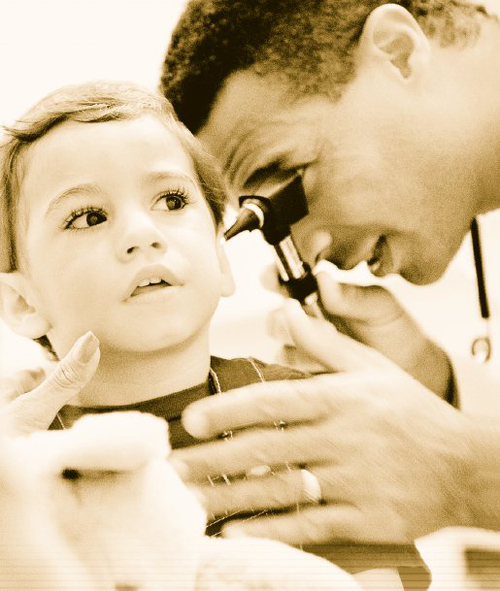
Psychiatrists and psychologists have invaded our once successful education systems and converted them into behavioral laboratories.
However, there are many courageous individuals who have succeeded in the face of this decay. Take the example of the young mother who was called into the school principal's office where a psychologist explained that her son's brain had an inability to send signals correctly, which was why he couldn't concentrate. Tim was put on Ritalin. He lost his appetite, had headaches and tired easily, yet it seemed impossible for him to sleep at night.
The mother took her son to a doctor who practiced alternative medicine who withdrew him from the drugs and prescribed nutrients and vitamins. Tim had food allergies. With this corrected, he fell asleep naturally. It was also discovered that Tim didn't understand what he had been reading in class. His mother purchased a "phonics game," taught him grammar and his reading level increased from second to sixth grade level.
It is a fact that undiagnosed, but treatable medical physical conditions often manifest as "psychiatric" symptoms.
According to a U.K. publication, Mental Illness Not All in the Mind, "The combination of any of the following: sub-optimum nutrition, exposure to antinutrients, overuse of sugar, stimulants and depressants and food allergies or intolerances - can be a very real contributor to mental and emotional health problems. The correction of these factors often results in substantial improvement."12
Thousands of children put on psychiatric drugs are simply "smart." "These students are bored to tears," wrote neurologist and author, Sydney Walker III. "And people who are bored fidget, wiggle, scratch, stretch, and ... start looking for ways to get into trouble."13 Tutoring also leads to improvements in academic outcomes.14
The end goal of any society when addressing education must be to raise the ability, the initiative and the cultural level and, thus, the survival level of the society. This will only be achieved when psychiatry and psychology, their prying tests, their invasive and fraudulent "diagnoses" and their harmful drugs are removed from schools and children's lives.

1 You have the right to refuse permission for your child to be subjected to any psychological or psychiatric questionnaire, test or evaluation in school.
2 If your child has been subjected to psychological/psychiatric screening without your consent, or coercively drugged, consult a lawyer to determine your right to prosecute criminally and civilly the responsible psychologists or psychiatrists, their colleges and associations.
3 Psychiatry and psychology must be eliminated from education and the State should not fund their coercive and unworkable methods.
Caution: No one should stop taking any psychiatric drug without the advice and assistance of a competent non-psychiatric medical doctor.

This publication was made possible by a grant from the United States International Association of Scientologists Members' Trust.
© 2004 CCHR. All Rights Reserved. CITIZENS COMMISSION ON HUMAN RIGHTS, CCHR and the CCHR logo are trademarks and service marks owned by Citizens Commission on Human Rights. Printed in the U.S.A. Item #FLO 19137